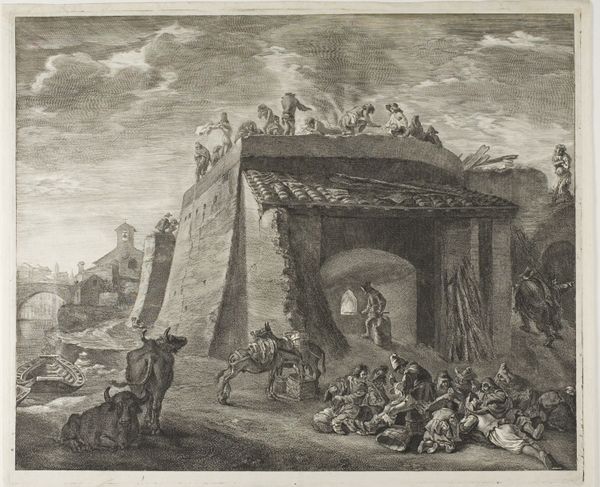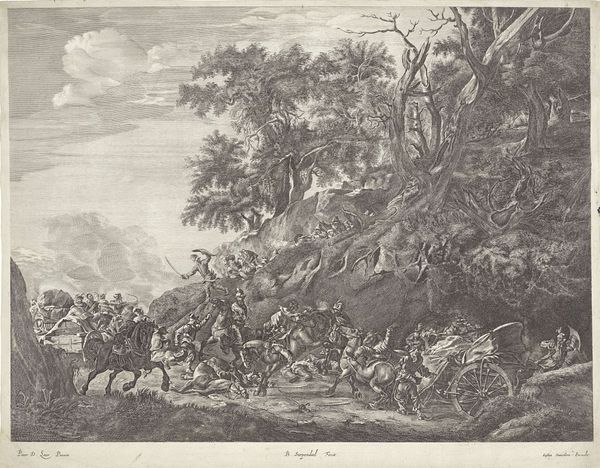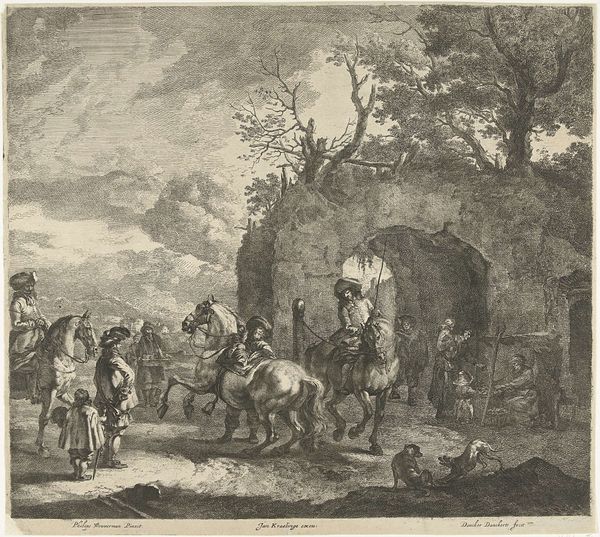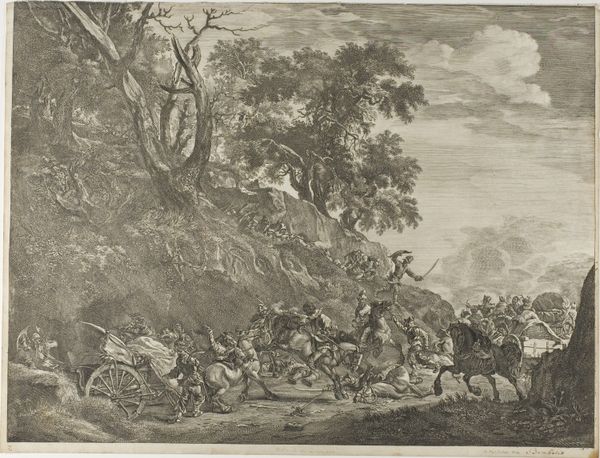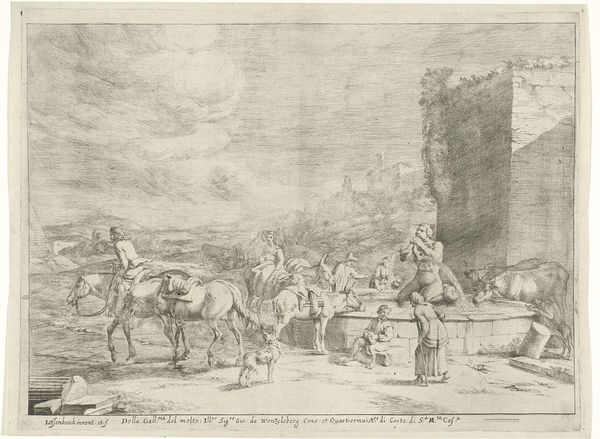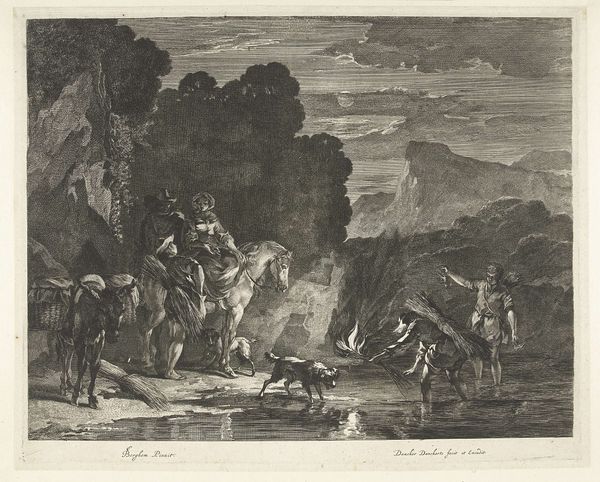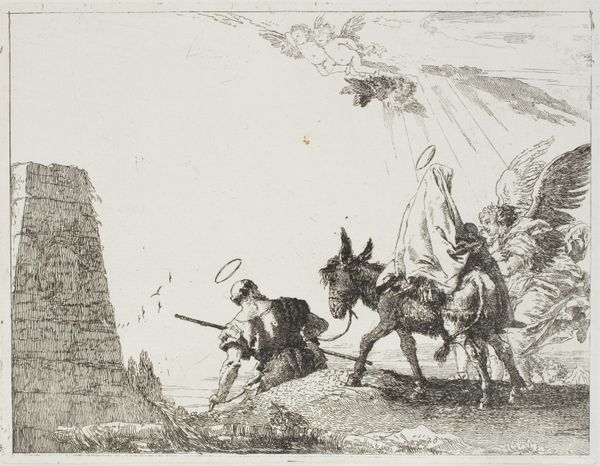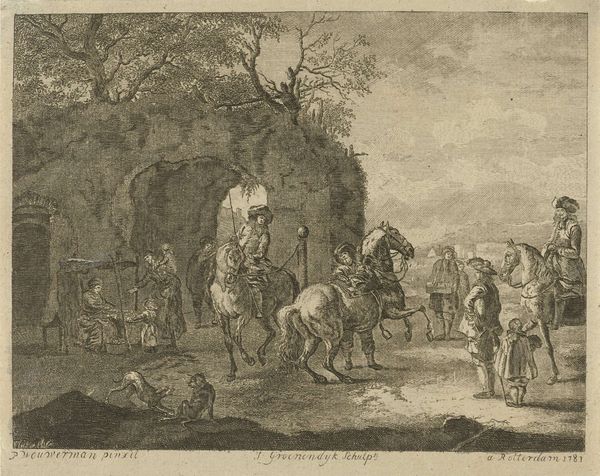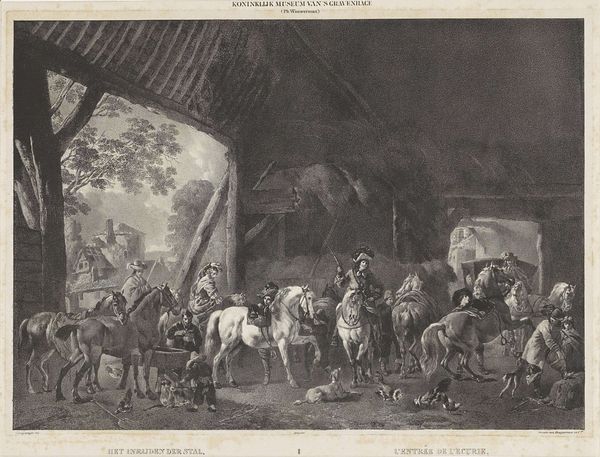
drawing, print, engraving
#
drawing
#
narrative-art
#
baroque
# print
#
figuration
#
form
#
line
#
cityscape
#
genre-painting
#
history-painting
#
engraving
#
realism
Dimensions: 318 x 388 mm (plate); 327 x 296 mm (sheet)
Copyright: Public Domain
Editor: Here we have Cornelis Visscher’s etching, "The Pistol Shot," from around 1655 to 1658. There’s such drama! A chaotic scene unfolds, like a freeze-frame from some epic narrative. I’m curious, how do you interpret this work? Curator: The power of this piece lies in its engagement with the socio-political landscape of the Dutch Golden Age. It invites viewers to consider the rise of merchant power. Note the stage-like setting, the exaggerated gestures of the figures. Is it pure accident, or is this violence performative, intended for an audience, much like theatre itself? Editor: I see what you mean. It’s like a play, but a really brutal one. There's someone on the ground, seemingly shot, and a coach in the background. Were depictions of violence like this common? Curator: More and more so. Prints like these served a vital public function, circulating images and ideologies to a broad audience. Think of how prints democratized art. Suddenly, even the less privileged could engage with narratives previously confined to elite circles, thus reflecting the shifts of wealth. Consider this work in relation to broader trends in representational politics: what narratives were becoming palatable, even desirable, to a growing middle class? Editor: So, it’s not just about the violence, but who gets to see it and what they think about it. It changes its meaning based on who’s looking. Curator: Precisely. It is a window into the social fabric, reflecting and shaping perceptions of power and morality. What did the rising merchant class in Dutch society seek in such representations? Editor: That's fascinating! I’ll definitely look at similar works with a new perspective, thinking about who the intended audience really was and how these types of scenes helped shape public perceptions.
Comments
No comments
Be the first to comment and join the conversation on the ultimate creative platform.
